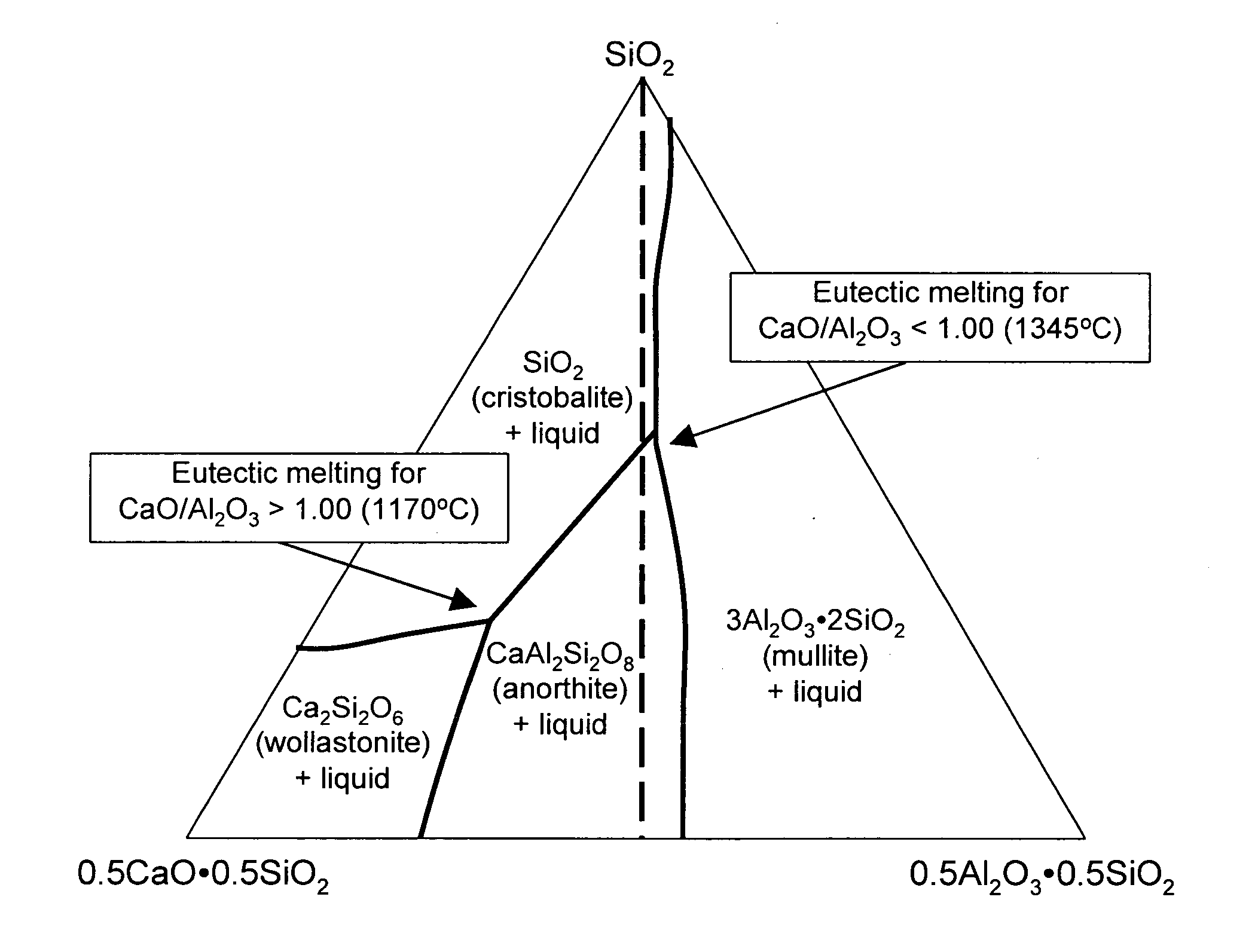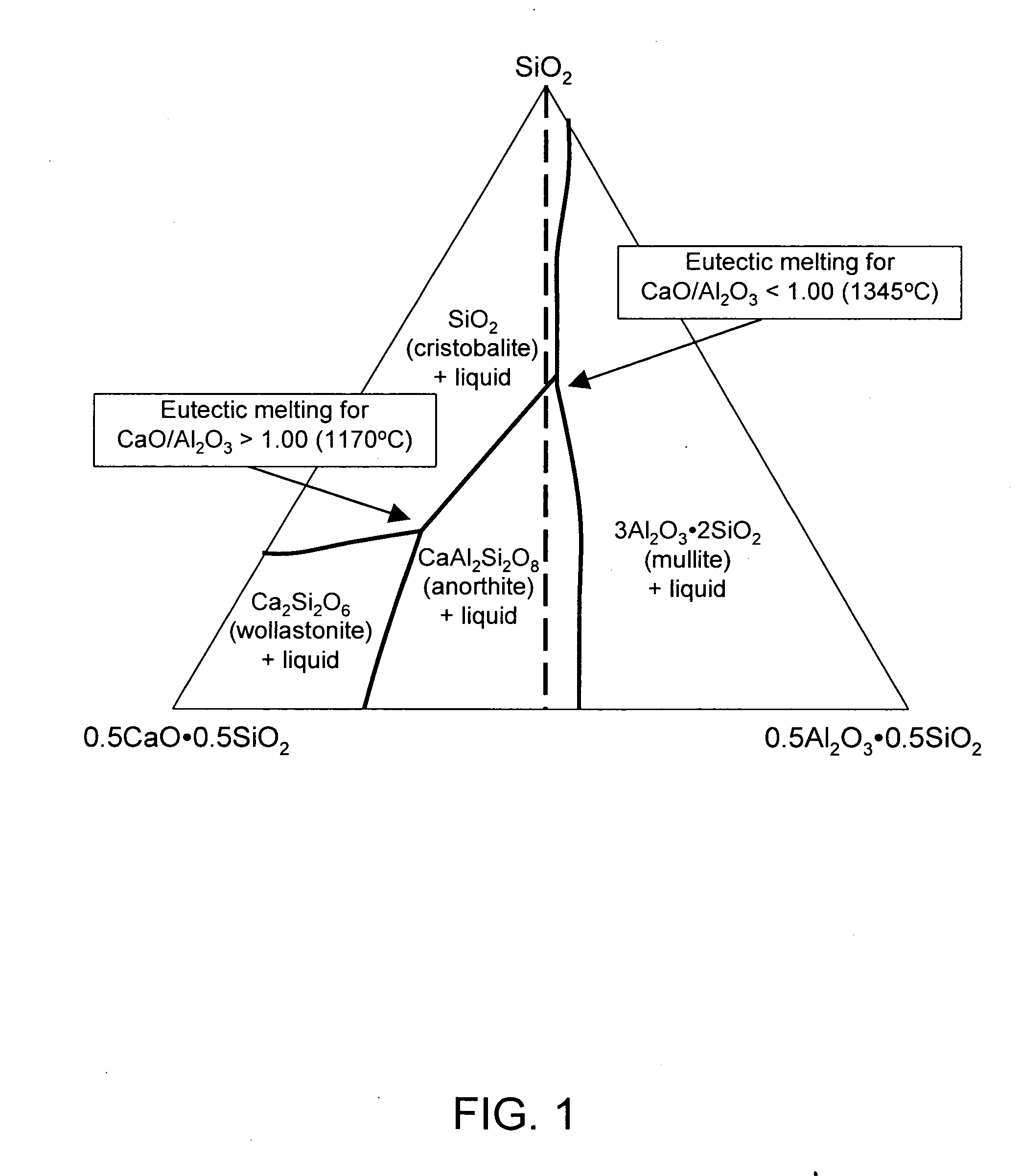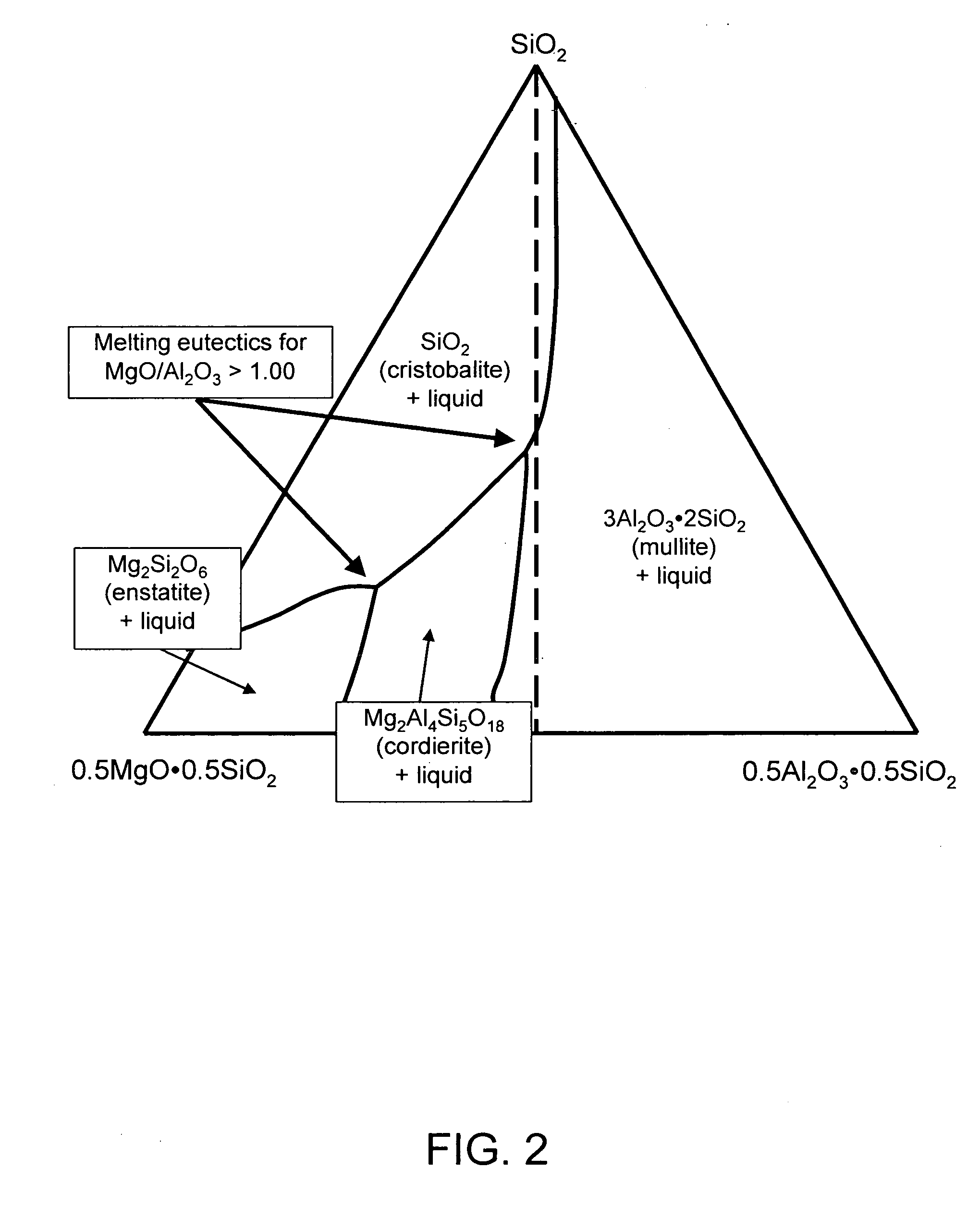Fining of boroalumino silicate glasses
a technology of boroalumino silicate glasses and boroalumino silicate, which is applied in the field of alkali-free, boroalumino silicate glasses, can solve the problems of affecting the ability of the light to rotate, the manufacturing of these displays is extremely complex, and the fusion process places rather severe restrictions on the glass properties
- Summary
- Abstract
- Description
- Claims
- Application Information
AI Technical Summary
Benefits of technology
Problems solved by technology
Method used
Image
Examples
example 45
[0112] Example 45 has a MgO concentration close to the upper limit of 3.0 mole percent. As noted above, as MgO increases, the liquidus temperatures initially go down but then increase. Example 45 illustrates this later effect.
[0113] Examples 46-48 have Σ[RO] / [Al2O3] ratios of less than 1.00 and thus have either a low liquidus viscosity (Example 46) or high melting temperatures (Examples 47 and 48). Examples 48-52 have MgO concentrations less than 1.0 mole percent and thus have high or marginal melting temperatures (Examples 48-50) or high CTE's (Examples 51 and 52).
[0114]FIG. 3 illustrates the dramatic improvement in defect levels that can be achieved by switching the Σ[RO] / [Al2O3] ratio of a glass from below 1.00 to above 1.00. This graph shows the results of an experimental study done over a 30 day period in which the Σ[RO] / [Al2O3] ratio was adjusted by increasing CaO and / or MgO at the expense of Al2O3 and / or SiO2. The triangular data points show the Σ[RO] / [Al2O3] ratios on the v...
PUM
| Property | Measurement | Unit |
|---|---|---|
| density | aaaaa | aaaaa |
| liquidus viscosity | aaaaa | aaaaa |
| temperature | aaaaa | aaaaa |
Abstract
Description
Claims
Application Information
 Login to View More
Login to View More - R&D
- Intellectual Property
- Life Sciences
- Materials
- Tech Scout
- Unparalleled Data Quality
- Higher Quality Content
- 60% Fewer Hallucinations
Browse by: Latest US Patents, China's latest patents, Technical Efficacy Thesaurus, Application Domain, Technology Topic, Popular Technical Reports.
© 2025 PatSnap. All rights reserved.Legal|Privacy policy|Modern Slavery Act Transparency Statement|Sitemap|About US| Contact US: help@patsnap.com



